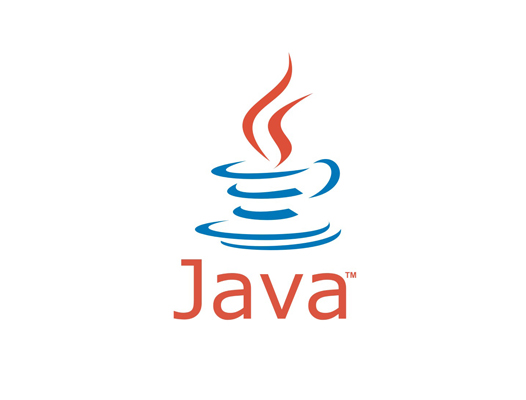
JAVA EXPERT
JAVA Expert Course targets Students who want to be a Professional Programmer in the Enterprise Application Development using JAVA. Java is a set of several computer software products and specifications fromOracle Corporation that provides a system for developing application softwareand deploying it in a cross-platform computing environment. Java is used in a wide variety of computing platforms from embedded devices and mobile phones on the low end, to enterprise servers and supercomputers on the high end.Companies like Oracle, Cisco, Google, etc. on the top end to companies like Infosys, Wipro, etc. are using Java. Google Uses java as the application development language for their mobile platform android. With almost 9 billion devices running on it. It is the biggest development platform ever.
Module I: Java standard Edition 8(Java sE 8)
Basics of Java Language
Object Oriented Programming
Modular Programming in java
Develop code that uses methods. Develop code that declares both static and non-static methods, and - if appropriate - use method names that adhere to the JavaBeans naming standards. Also develop code that declares and uses a Variable length argument list. Given a code example, determine if a method is correctly overriding or overloading another method, and identify legal return values (including covariant returns), for the method. ng and Multi-Threaded Application,Create and implement Object Serialization
Constructors and object Initialization
Define classes and super classes, develop constructors for one or more of the classes. Understand a class declaration, determine if a default constructor will be created, and if so, determine the behavior of that constructor. Understand a nested or non-nested class listing, write code to instantiate the class.
API Contents
Wrapper classes (such as Boolean, Character, Double, Integer, etc.), and/or autoboxing & unboxing - The String, StringBuilder, and StringBuffer classes. Standard J2SE APIs - dates, numbers, and currency values for a specific locale; and, given a scenario, determine the appropriate methods to use if you want to use the default locale or a specific locale. Describe the purpose and use of the java.util. Locale class.Advantages of localization,Resource bundles, - java.util and java.util. regex packages to format or parse strings or streams. - Pattern and Matcher classes and the String.split method. Recognize and use regular expression patterns for matching (limited to: . (dot), * (star), + (plus), ?, \d, \s, \w, [], ()). Formatter and Scanner classes and the PrintWriter.format/printf methods. Recognize and use formatting parameters (limited to: %b, %c, %d, %f, %s) in format strings.
Using Exception Classes and Assertions
Develop code that makes use of assertions, and distinguish appropriate from inappropriate uses of assertions. Develop code that makes use of exceptions and exception handling clauses (try, catch, finally), and declares methods and overriding methods that throw exceptions. Recognize the effect of an exception arising at a specified point in a code fragment. Note that the exception may be a runtime exception, a checked exception, or an error. Understand which of these are thrown by the virtual machine and recognize situations in which others should be thrown programatically.
Using Generics and the Collections Framework
Given a design scenario, determine which collection classes and/or interfaces should be used to properly implement that design, including the use of the Comparable interface. Distinguish between correct and incorrect overrides of corresponding hashCode and equals methods, and explain the difference between == and the equals method. Write code that uses the generic versions of the Collections API, in particular, the Set, List, and Map interfaces and implementation classes. Recognize the limitations of the non-generic Collections API and how to refactor code to use the generic versions. Type inference(diamond).Stack and Deque. Write code that uses the NavigableSet and NavigableMap interfaces. Develop code that makes proper use of type parameters in class/interface declarations, instance variables, method arguments, and return types; and write generic methods or methods that make use of wildcard types and understand the similarities and differences between these two approaches. Use capabilities in the java.util package to write
code to manipulate a list by sorting, performing a binary search, or converting the list to an array. Use capabilities in the java.util package to write code to manipulate an array by sorting, performing a binary search, or converting the array to a list. Use the java.util.Comparator and java.lang.Comparable interfaces to affect the sorting of lists and arrays. Furthermore, recognize the effect of the natural ordering of primitive wrapper classes and java.lang.String on sorting.
Transfer Data Using I/O Streams and Readers
Given a scenario involving navigating file systems, reading from files, writing to files, or interacting with the user, Directory and File operations,managing file system attributes .develop the correct solution using the following classes (sometimes in combination), from java.io: BufferedReader, BufferedWriter, File, FileReader, FileWriter, PrintWriter, and Console. Develop code that serializes and/or de-serializes objects using the following APIs from java.io: DataInputStream,
DataOutputStream, FileInputStream, FileOutputStream, ObjectInputStream, ObjectOutputStream and Serializable.
Implement Multi-Threaded Applications
What are Threads?,write code to define, instantiate, and start new threads using both java.lang.Thread and java.lang.Runnable. Identify the thread properties,Recognize the states in which a thread can exist, and identify ways in which a thread can transition from one state to another-life cycle of a thread. Given a scenario,
write code that makes appropriate use of object locking to protect static or instance variables from concurrent access problems Synchronization-when to use synchronized blocks of codeIdentify the scenario in which deadlock is generated, Immutable Objects,The Java.util.concurrency Package,Using an Executor Service. Given a scenario, write code that makes appropriate use of wait, notify, or notifyAll.